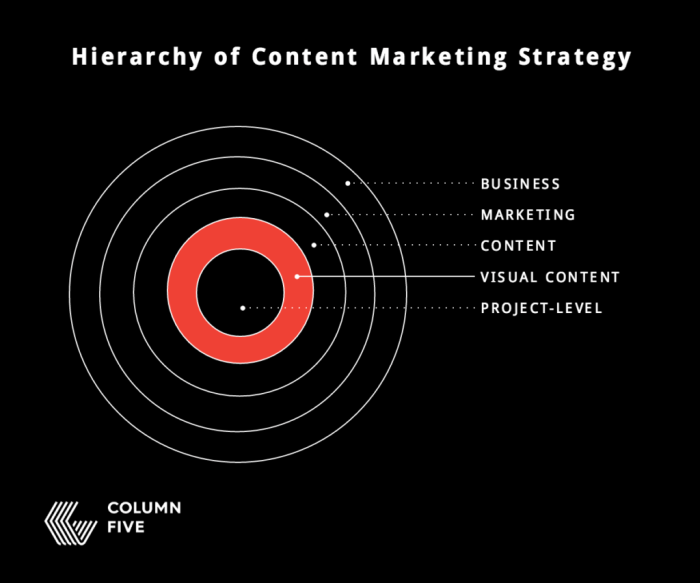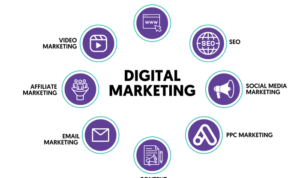Building a Visual Content Strategy is like crafting a masterpiece for your brand, using images, videos, and graphics to captivate your audience and enhance brand identity. Dive into this guide to discover the secrets of creating a compelling visual narrative that speaks volumes.
Learn how to harness the power of visual content to leave a lasting impression and boost engagement across different platforms.
Importance of Visual Content Strategy
Visual content plays a crucial role in capturing and maintaining the attention of the audience. In today’s fast-paced digital world, where information overload is a common issue, visual elements can effectively convey messages quickly and efficiently. Whether it’s through images, videos, infographics, or other multimedia formats, visual content has the power to engage viewers and make a lasting impression.
A well-thought-out visual content strategy goes beyond just creating eye-catching graphics. It involves aligning visuals with the brand’s overall message, values, and identity. Consistent use of visuals that reflect the brand’s personality can help strengthen brand recognition and build a connection with the audience. By incorporating brand elements such as logos, color schemes, and design styles into visual content, companies can create a cohesive brand identity that sets them apart from competitors.
Visual elements also play a significant role in shaping user experience and improving user retention. Studies have shown that content with relevant images or videos receives more views and shares compared to text-only content. Visuals can help break up large blocks of text, making content more digestible and engaging for users. Additionally, compelling visuals can evoke emotions, tell stories, and create a memorable experience for the audience, ultimately leading to higher engagement and retention rates.
Elements of a Visual Content Strategy

Visual content is a crucial aspect of any successful marketing strategy in today’s digital age. Let’s dive into the key components that make up a strong visual content strategy.
High-Quality Images, Videos, and Graphics
When it comes to visual content, quality is key. High-quality images, videos, and graphics can help your brand stand out and capture the attention of your target audience. Whether it’s striking product photos, engaging video content, or eye-catching infographics, investing in top-notch visuals can enhance the overall user experience and increase engagement.
- Images: Visually appealing images can help convey your brand message and create a strong visual identity.
- Videos: Video content is highly engaging and can effectively communicate complex ideas in a more digestible format.
- Graphics: Infographics and other visual elements can help simplify information and make it easier for your audience to understand.
Consistency in Visual Branding
Consistency is key when it comes to visual branding across different platforms. Maintaining a cohesive look and feel in your visual content helps build brand recognition and trust with your audience. Whether it’s through color schemes, fonts, or design elements, ensuring consistency in your visual branding can help reinforce your brand identity and make it more memorable to consumers.
- Color Scheme: Using consistent colors across all your visual content can help create a sense of unity and coherence.
- Fonts: Choosing a consistent set of fonts for your brand can help establish a strong visual identity and make your content more recognizable.
- Design Elements: From logo placement to overall design aesthetics, keeping visual elements consistent can help strengthen brand recall and loyalty.
Developing a Visual Content Strategy
Creating a visual content strategy from scratch can seem daunting, but breaking it down into steps can make it more manageable.
Step 1: Define Your Goals
- Identify your overall marketing objectives and how visual content can support them.
- Set specific, measurable goals for your visual content strategy, such as increasing brand awareness or driving website traffic.
- Align these goals with your company’s mission and values to ensure consistency.
Step 2: Know Your Audience
- Conduct thorough audience research to understand who your target audience is and what visual content resonates with them.
- Identify their preferences, demographics, and behaviors to tailor your visual content accordingly.
- Use tools like surveys, social media analytics, and website data to gather insights about your audience.
Step 3: Create a Content Calendar, Building a Visual Content Strategy
- Plan out a content calendar that Artikels the types of visual content you will create and when they will be published.
- Consider seasonal trends, holidays, and industry events to ensure your content is timely and relevant.
- Include a mix of different visual formats, such as videos, infographics, and images, to keep your audience engaged.
Integrating Visual Content Across Platforms: Building A Visual Content Strategy

In today’s digital age, it’s crucial to ensure that your visual content is optimized for various social media platforms, websites, and mobile devices to effectively reach your target audience and maximize engagement.
Adapting Visual Content to Different Social Media Platforms
When adapting visual content to different social media platforms, consider the unique features and audience preferences of each platform. For example, images on Instagram should be more visually appealing and engaging, while visuals on LinkedIn should be more professional and informative. Tailoring your visual content to fit the specific platform can help increase visibility and engagement.
Optimizing Visual Content for Websites and Mobile Devices
To optimize visual content for websites and mobile devices, ensure that images and videos are high-quality, properly sized, and load quickly. Implement responsive design to ensure that your visuals adapt to different screen sizes and orientations. Additionally, consider using compressed images and videos to improve loading times on mobile devices.
Repurposing Visual Content for Maximum Reach and Engagement
Repurposing visual content involves taking existing visuals and adapting them for different platforms or purposes. For example, you can turn a blog post into an infographic, or create short video clips from a longer video. By repurposing visual content, you can reach a wider audience and keep your content fresh and engaging across various channels.





